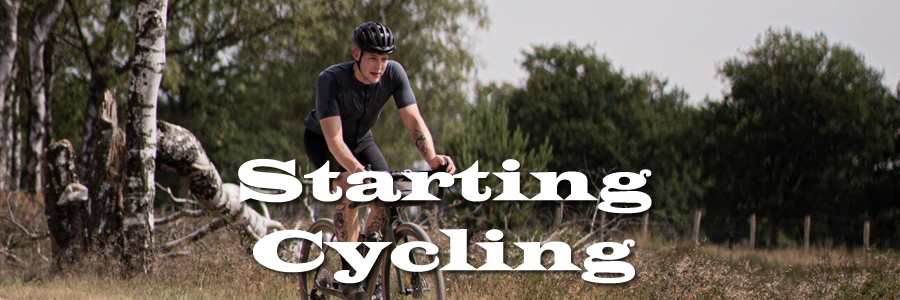Cycling can be a fun and healthy way to get exercise, explore your surroundings, and even commute to work or run errands.
I restarted my cycling in 1996 after my left knee decided it didn’t want to run any more.
Here are a few tips to get started:
The first step is to get a bike that suits your needs and budget.
You can buy a new or used bike from a bike shop, or even rent a bike to see if you enjoy cycling before committing to a purchase. There are many Buy / Sell web sites, where you can find many second-user bikes at all sorts of prices.
Bikes can cost from a little – to many thousands of pounds. If possible try and buy from your local Bike Shop (your LBS), they are the best place to start.
You’ll need some essential gear before you hit the road, including a helmet, comfortable clothes and shoes, and, if you plan to cycle in low light conditions, reflective clothing or lights.
Don’t go out buying all the gear just yet, again, it can be quite expensive, if cycling is not right for you.
Don’t push yourself too hard at first.
Start with shorter rides at an easy pace, and gradually increase the distance and intensity as you become more comfortable
It is very important that you learn the rules of the road.
Cycling on the road can be intimidating at first, so make sure you understand the rules of the road, including hand signals, how to use bike lanes, and how to navigate intersections.
Read the Highway Code – there are many good sections on handling traffic.
Try and join a local cycling group.
Cycling with a group can be a great way to learn from more experienced riders, discover new routes, and stay motivated.
Most cycling groups have different rides that will suit your interests and fitness level.
Use a cycling app or fitness tracker to monitor your progress, set goals, and track your achievements. Or just note down your distance and time.
Remember, cycling is a fun and healthy activity that can be enjoyed by people of all ages and fitness levels.
Start slow, be safe, and have fun!
There are a number of different types of cycling, each with its own unique features and benefits. Sometimes it’s good try out something new.
Road Cycling:
This is the most popular form of cycling and involves riding on the roads with a lightweight road bike.
Road cycling can include racing, touring, organised group rides, Sportives or even long distance rides.
Sometimes, just riding for fun is best!
Mountain Biking:
This involves riding off-road trails and rough terrain, using a specialised mountain bike with wider tires, suspension, and other features to handle the terrain.
Cyclocross:
This is a type of cycling that combines road and mountain biking and involves riding on a closed course with obstacles that often require dismounting and carrying the bike.
Cyclocross is mainly run in the winter months, and riders can get very dirty riding through the mud!
BMX:
This type of cycling involves riding on a small, rugged bike and performing tricks and stunts on a specially designed course.
Teenagers and youngsters love BMX, and there are many BMX courses dotted around the country.
Track Cycling:
This takes place on a banked, oval track (Velodrome) and includes events such as sprinting and endurance racing.
The bikes tend to be very high end and are usually single geared and built without brakes.
Not for the faint-hearted, but great fun to try out.
Recreational Cycling:
This is a casual form of cycling for enjoyment and fitness, usually done on the roads or bike paths.
Commuting Cycling:
This involves using a bike for transportation to work or other destinations, often on roads or bike lanes.
Ride bikes are a given for commuting.
Each type of cycling has its own unique benefits and challenges, and riders can choose the type that best suits their goals and interests.
Get Started and have Fun.

